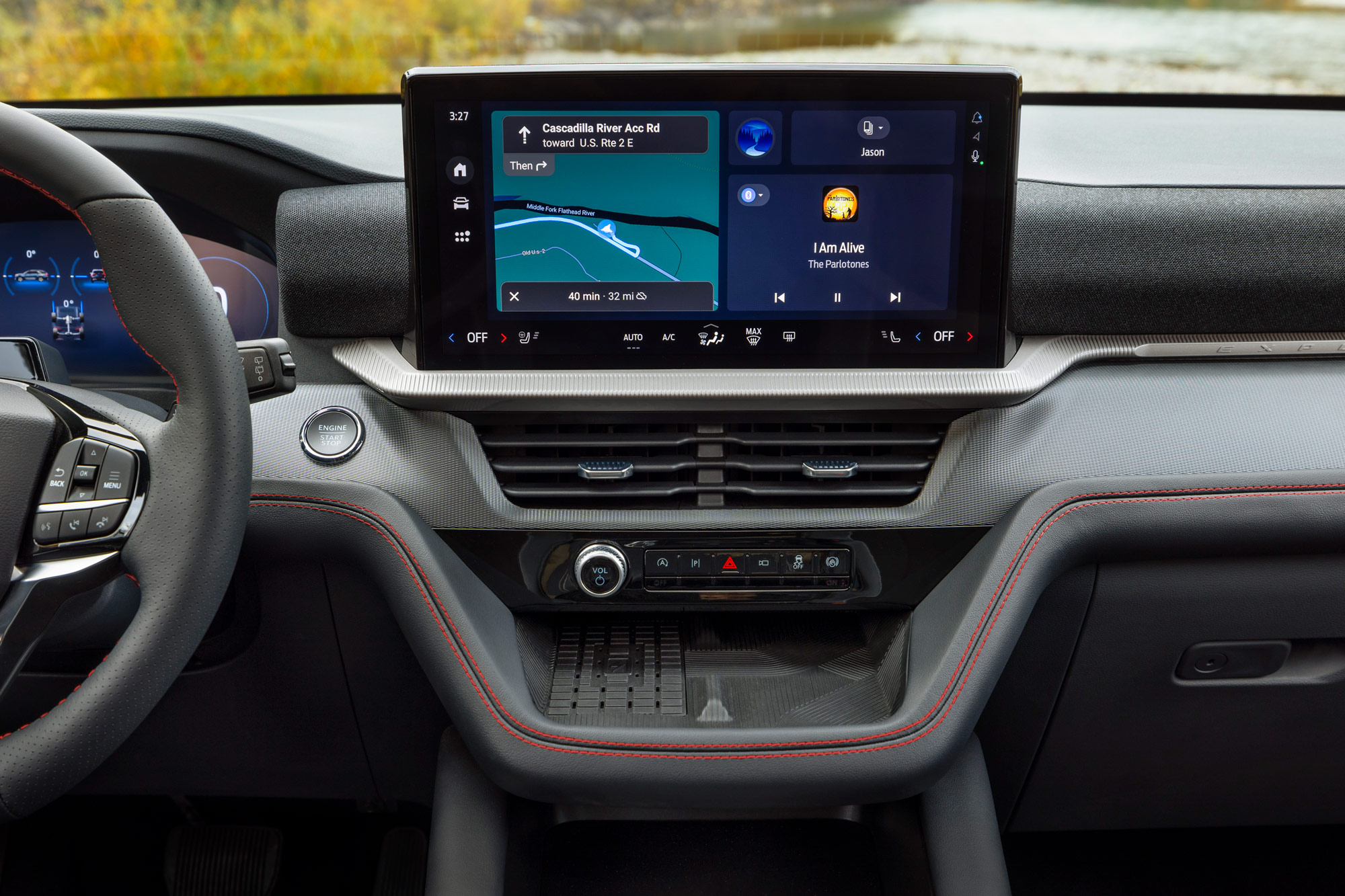/https://www.forbes.com/wheels/wp-content/uploads/2022/05/FordExplorerEVMain.png)
Navigating the Future: The 2025 Ford Explorer and the Power of Google Maps Integration
The automotive landscape is constantly evolving, driven by technological advancements that blur the lines between transportation and digital experiences. At the forefront of this evolution stands the 2025 Ford Explorer, a vehicle that seamlessly integrates the power of Google Maps into its very core, promising a driving experience that is both intuitive and connected.
A Marriage of Power and Intelligence:
The 2025 Ford Explorer doesn’t simply offer Google Maps as an afterthought; it embraces the platform as an integral part of its DNA. This integration goes beyond a simple navigation app, extending to a comprehensive suite of features that enhance every aspect of the driving experience.
Navigation Reimagined:
The most obvious benefit of the Google Maps integration is the enhanced navigation experience. Forget about fiddling with confusing menus or struggling to understand complex directions. The 2025 Explorer’s intuitive interface seamlessly integrates with the Google Maps platform, providing drivers with:
- Real-time traffic updates: Forget about getting caught in unexpected traffic jams. The 2025 Explorer utilizes real-time traffic data from Google Maps to dynamically adjust routes, ensuring a smooth and efficient journey.
- Personalized route suggestions: The Explorer learns your driving habits and preferences, suggesting the most efficient routes based on your usual destinations, preferred roads, and even real-time traffic conditions.
- Augmented Reality Navigation: The Explorer’s head-up display seamlessly overlays Google Maps directions onto the real-world view, guiding you with clear arrows and turn-by-turn instructions projected directly onto the windshield.
Beyond Navigation: A Connected Ecosystem:
The 2025 Ford Explorer’s Google Maps integration transcends simple navigation, extending into a comprehensive ecosystem of connected features:
- Google Assistant Integration: Talk to Google Assistant through the vehicle’s built-in microphone to control music, make calls, send text messages, and even access a wealth of information, all without taking your hands off the wheel.
- Smart Parking: The Explorer’s Google Maps integration helps you find available parking spaces in real-time, displaying their location, price, and availability directly on the infotainment system.
- Point-of-Interest (POI) Recommendations: The Explorer’s Google Maps integration provides personalized recommendations for nearby restaurants, gas stations, hotels, and other points of interest based on your preferences and location.
- Electric Vehicle Support: For those opting for the electric variant, the 2025 Explorer seamlessly integrates with Google Maps’ EV charging station network, providing information on charger availability, price, and charging time.
Safety and Convenience:
The Google Maps integration goes beyond entertainment and convenience, enhancing safety and peace of mind:
- Emergency Response: In case of an accident, the Explorer automatically sends your location and details to emergency services via Google Maps, facilitating faster response times.
- Hazard Detection: The Explorer’s Google Maps integration utilizes real-time data to warn drivers of potential hazards on the road, such as road closures, accidents, or construction zones.
- Parking Assistance: The Explorer’s Google Maps integration assists with parking maneuvers, providing visual guidance and even automatically steering the vehicle into tight parking spots.
The Future of Driving:
The 2025 Ford Explorer with Google Maps integration represents a significant step forward in the evolution of the automotive experience. It’s not just about getting from point A to point B; it’s about creating a seamless and connected journey that enhances every aspect of driving.
Beyond the Benefits: Potential Concerns:
While the integration of Google Maps into the 2025 Ford Explorer offers numerous advantages, it’s important to acknowledge potential concerns:
- Privacy Concerns: With the Explorer constantly collecting data on your driving habits and location, privacy concerns are a valid consideration. Ford and Google assure users that data is handled with utmost care and security, but the potential for misuse remains a concern.
- Connectivity Reliance: The Explorer’s reliance on Google Maps necessitates a strong internet connection. In areas with poor connectivity, the functionality of many features may be compromised.
- Potential for Distractions: While the intuitive interface aims to minimize distractions, the use of Google Assistant and other features can still pose a risk to driver safety if not used responsibly.
Conclusion:
The 2025 Ford Explorer with Google Maps integration represents a significant leap forward in the automotive industry. It promises a driving experience that is both intuitive and connected, offering enhanced navigation, safety, and convenience. However, it’s crucial to be aware of potential concerns regarding privacy, connectivity, and potential distractions. Ultimately, the success of this integration will depend on how well Ford and Google address these concerns while ensuring a safe and enjoyable driving experience.
Beyond the 2025 Explorer: The Future of Connected Cars
The 2025 Ford Explorer is just the beginning of a larger trend in the automotive industry. As technology continues to advance, we can expect to see even more sophisticated integrations of Google Maps and other digital platforms into cars.
Here are some potential advancements:
- Autonomous Driving: Google Maps could play a crucial role in autonomous driving, providing real-time information on road conditions, traffic patterns, and potential hazards, enabling vehicles to navigate safely and efficiently.
- Personalized Recommendations: Imagine a car that learns your preferences and suggests nearby restaurants, shops, and attractions based on your interests and past experiences.
- In-Car Entertainment: Google Maps could be integrated with streaming services, allowing passengers to enjoy movies, music, and games while on the road.
- Enhanced Safety Features: Real-time data from Google Maps could be used to develop advanced safety features, such as predictive braking, collision avoidance, and lane keeping assistance.
The future of driving is becoming increasingly connected and digital, and the 2025 Ford Explorer with Google Maps integration is a glimpse into this exciting future. As technology continues to evolve, we can expect to see even more innovative and transformative features that enhance the driving experience in ways we can only imagine today.









